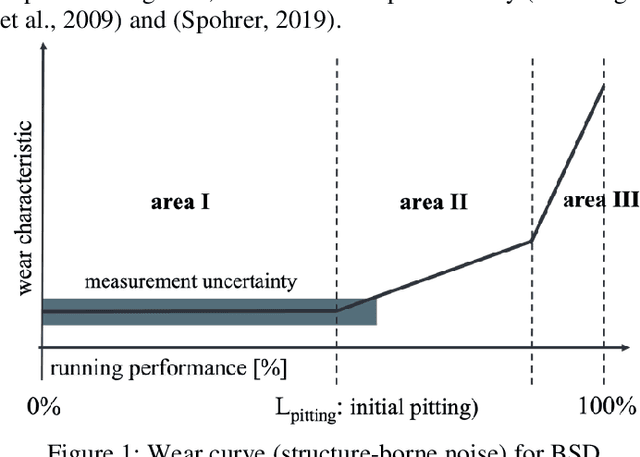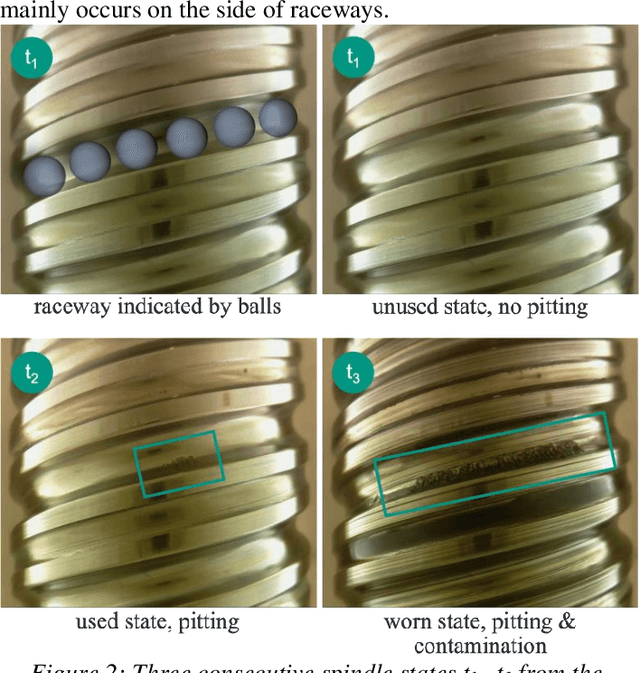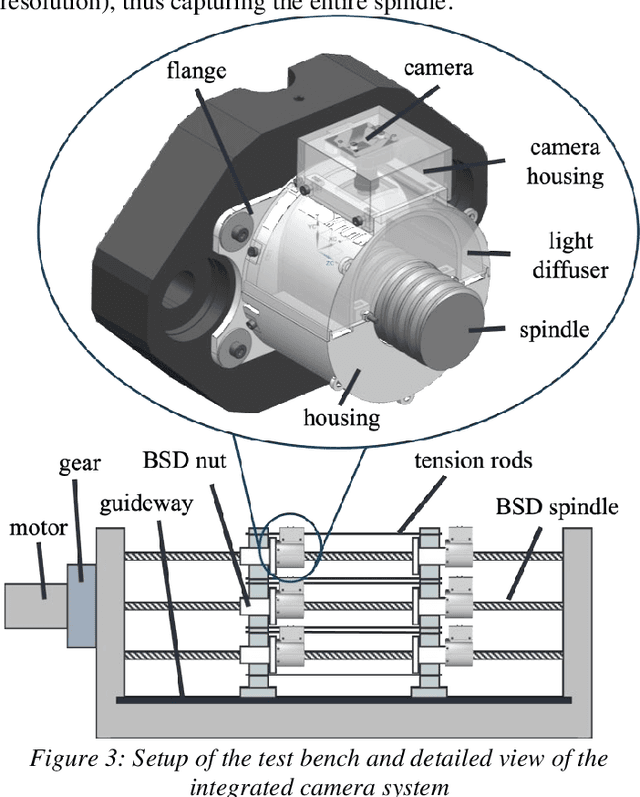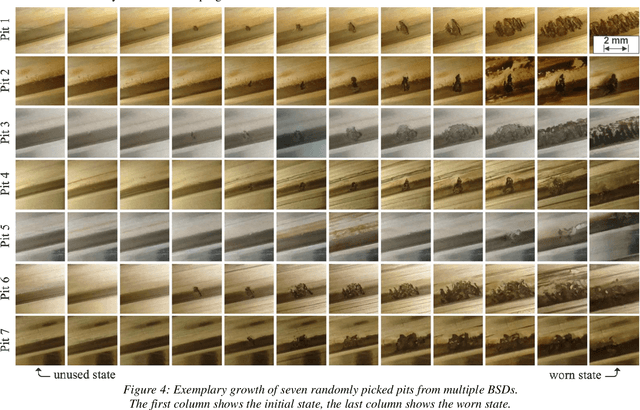Tim Scheurenbrand
Cross-domain Transfer of defect features in technical domains based on partial target data
Nov 24, 2022Abstract:A common challenge in real world classification scenarios with sequentially appending target domain data is insufficient training datasets during the training phase. Therefore, conventional deep learning and transfer learning classifiers are not applicable especially when individual classes are not represented or are severely underrepresented at the outset. In many technical domains, however, it is only the defect or worn reject classes that are insufficiently represented, while the non-defect class is often available from the beginning. The proposed classification approach addresses such conditions and is based on a CNN encoder. Following a contrastive learning approach, it is trained with a modified triplet loss function using two datasets: Besides the non-defective target domain class 1st dataset, a state-of-the-art labeled source domain dataset that contains highly related classes e.g., a related manufacturing error or wear defect but originates from a highly different domain e.g., different product, material, or appearance = 2nd dataset is utilized. The approach learns the classification features from the source domain dataset while at the same time learning the differences between the source and the target domain in a single training step, aiming to transfer the relevant features to the target domain. The classifier becomes sensitive to the classification features and by architecture robust against the highly domain-specific context. The approach is benchmarked in a technical and a non-technical domain and shows convincing classification results. In particular, it is shown that the domain generalization capabilities and classification results are improved by the proposed architecture, allowing for larger domain shifts between source and target domains.
Analysis of the Visually Detectable Wear Progress on Ball Screws
May 02, 2022



Abstract:The actual progression of pitting on ball screw drive spindles is not well known since previous studies have only relied on the investigation of indirect wear effects (e. g. temperature, motor current, structure-borne noise). Using images from a camera system for ball screw drives, this paper elaborates on the visual analysis of pitting itself. Due to its direct, condition-based assessment of the wear state, an image-based approach offers several advantages, such as: Good interpretability, low influence of environmental conditions, and high spatial resolution. The study presented in this paper is based on a dataset containing the entire wear progression from original condition to component failure of ten ball screw drive spindles. The dataset is being analyzed regarding the following parameters: Axial length, tangential length, and surface area of each pit, the total number of pits, and the time of initial visual appearance of each pit. The results provide evidence that wear development can be quantified based on visual wear characteristics. In addition, using the dedicated camera system, the actual course of the growth curve of individual pits can be captured during machine operation. Using the findings of the analysis, the authors propose a formula for standards-based wear quantification based on geometric wear characteristics.
 Add to Chrome
Add to Chrome Add to Firefox
Add to Firefox Add to Edge
Add to Edge